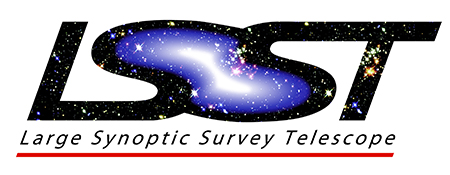http://en.wikipedia.org/wiki/Large_Synoptic_Survey_Telescope
大型綜合巡天望遠鏡(Large Synoptic Survey Telescope, LSST)是一個計畫中的廣視野巡天反射望遠鏡,將每三天拍攝全天一次。LSST預計在2010年開始動工,並在2015年啟用[5]。
LSST將設置在智利北部科金博大區的帕穹山(Cerro Pachón)的伊爾佩恩峰(El Peñón),海拔2682公尺,就位在雙子星天文台和南方天文物理研究望遠鏡(Southern Astrophysical Research telescope,SOAR)的旁邊[6]。
Tuesday, April 21, 2015
Large Synoptic Survey Telescope Taps Carnegie Mellon Statistician To Lead Informatics and Statistics Science
By Shilo Rea / 412-268-6094
 Starting in 2022, the Large Synoptic Survey Telescope (LSST) will digitally image the sky every night for a decade. The massive camera will gather roughly 30 terabytes — or 30,000 gigabytes — each night, creating “big data” for astronomy like never before.
Starting in 2022, the Large Synoptic Survey Telescope (LSST) will digitally image the sky every night for a decade. The massive camera will gather roughly 30 terabytes — or 30,000 gigabytes — each night, creating “big data” for astronomy like never before.
To help prepare for the data challenges, Carnegie Mellon University’s Chad Schaferhas been elected co-chair of the LSST Informatics and Statistics Science Collaboration. Schafer, associate professor of statistics in the Dietrich College of Humanities and Social Sciences, and Cornell University’s Tom Loredo will lead the team, whose objective is to develop new methods to analyze and gain scientific insight from the data collected.
The unprecedented telescope will create a new paradigm for ground-based astronomy by scanning the sky over and over again, collecting many petabytes of data each year. This data promises to yield exciting new discoveries across the face of astronomy, from the motions of present-day asteroids to establishing the history of our galaxy and understanding the nature of dark matter and dark energy.
Christopher R. Genovese, head of CMU’s Department of Statistics, said questions in astronomy and cosmology that the LSST will help answer have a fundamentally statistical component: using complex data to learn about the underlying physics of the universe.
“Our astrostatistics research group in the Statistics Department has been successfully tackling problems like this for over a decade, working in the trenches with scientists to advance both fields. It is an example of interdisciplinary research at its finest,” Genovese said. “Chad is a key member of our group who is widely respected and sought after by astronomers and cosmologists. His leadership role in the LSST Informatics and Statistics Science Collaboration is a testament both to his long success at bringing new statistical ideas to astronomy and cosmology and to the scientists' appreciation for the value and impact of these ideas. His work on this collaboration will lead to improvements in analysis of LSST data — and thus in the quality of scientific results the project achieves.”
In 2014, the National Science Foundation (NSF) authorized a cooperative agreement with the Association of Universities for Research in Astronomy (AURA) for the LSST’s construction. The LSST will be built through an NSF and Department of Energy (DOE) partnership. The NSF will provide $473 million for the telescope, site, data management, education and outreach, and the DOE will provide about $165 million for the 3.1 billion pixel camera and related instrumentation.
Early development of the LSST was conducted by the LSST Corporation, a consortium of universities, laboratories and research institutes. Carnegie Mellon and its McWilliams Center for Cosmology have been deeply involved since joining the consortium in 2008, with Fred Gilman, dean of the Mellon College of Science, serving as both a member of the LSST Corporation Executive Board and as chair of the AURA Council that oversees the LSST's construction. Major milestones that led to the start of construction included the National Research Council's 2010 Astronomy and Astrophysics Decadal Survey Committee naming the LSST as the top-ranked ground-based facility, and the NSF, then under the direction of current Carnegie Mellon President Subra Suresh, giving the go-ahead to final design in 2012.
“The multidisciplinary work of the McWilliams Center for Cosmology brings together physicists, computer scientists and statisticians to answer some of the biggest questions in physics,” Gilman said.. “The astrostatistics group at Carnegie Mellon is one of the very best, and Chad and his colleagues are critical to the success of the center and to getting science from the data produced by the LSST.”
Schafer, who joined the CMU faculty in 2004, became interested in applying statistical methods to address problems in astronomy while in graduate school at the University of California, Berkeley. A big part of his motivation to come to CMU was the Statistics Department’s expertise and leadership in astrostatistics and its reputation for substantive collaboration with astronomers. Schafer believes the approaches developed to analyze the LSST data will not only aid the project as it revolutionizes the understanding of the universe, but it will impact other fields.
“There is constant talk of the potential and challenges of working with ‘Big Data,’ and LSST is a great motivating force to advance statistical methods to deal with large quantities of data of varied forms. There is a very complex relationship between the physical constants you want to estimate and the data you can actually collect by observing the universe,” Schafer said. “We’re starting to see that a lot in other domains. Statistical methods developed to use for the telescope’s data will also be useful in these situations.”
Additional Carnegie Mellon faculty members are actively engaged in the LSST consortium. For example, Rachel Mandelbaum is on the Science Advisory Committee for the LSST project. She and Shirley Ho are each co-leaders of working groups in the LSST Dark Energy Science Collaboration. Rupert Croft, Tiziana DiMatteo and Hy Trac are lending their expertise to the task of developing the enormous volume of cosmological simulations that will be needed to interpret the LSST data.
Faculty from the Physics Department, Statistics Department and School of Computer Science are working together to develop simulation and analysis tools that will permit enormous improvements in extracting science from LSST data, exemplified by the research supported by a recent Department of Energy grant to Ho, Mandelbaum and Trac in Physics, Jeff Schneider and Barnabas Poczos in SCS, and Genovese and Schafer in Statistics.
Related Articles:
沒有留言:
張貼留言